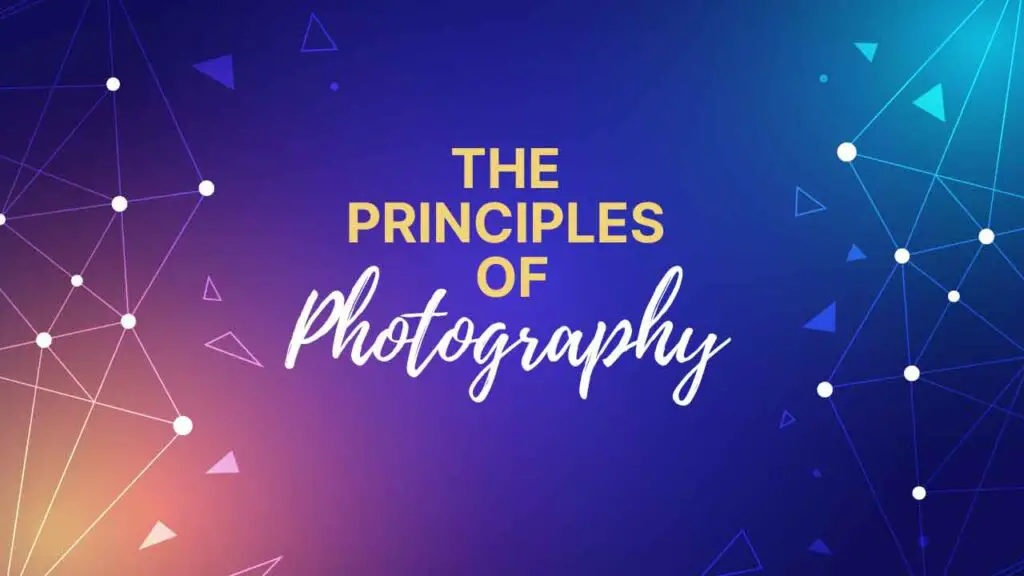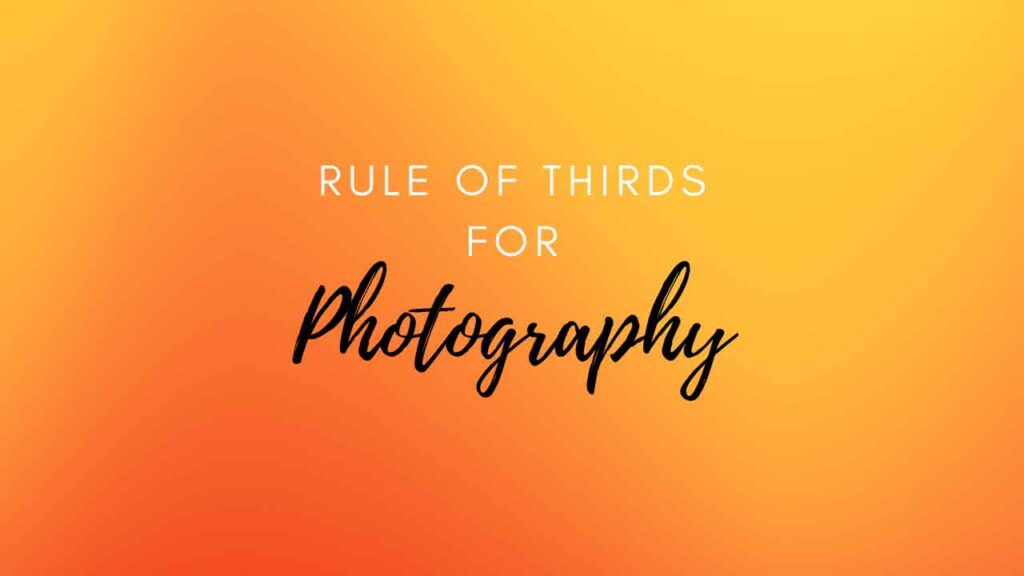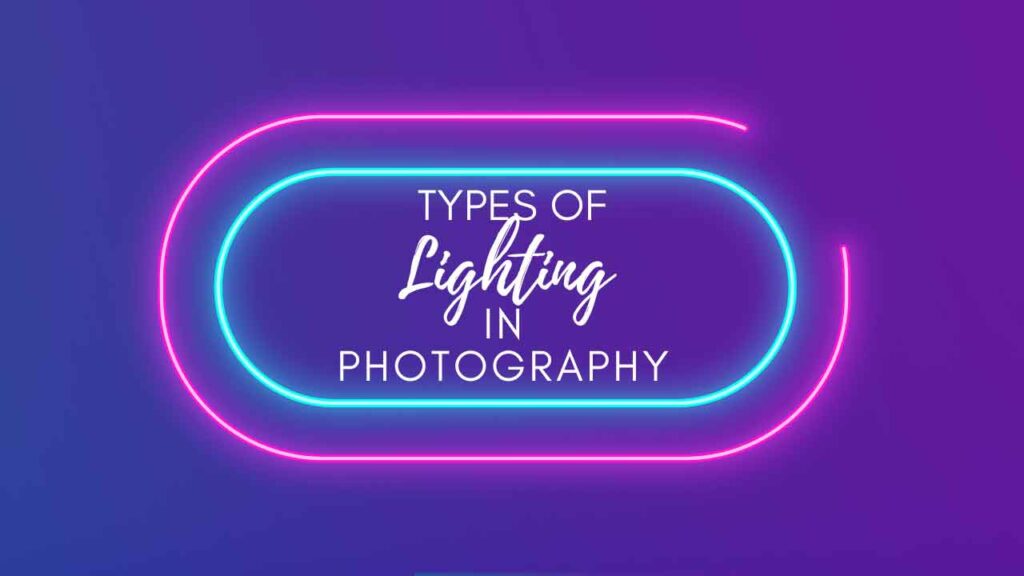THIS ARTICLE MAY CONTAIN AFFILIATE MARKETING LINKS! IN CASE YOU MAKE A PURCHASE THROUGH ONE OF THE LINKS, WE'LL GET A SMALL COMMISSION. WITH NO EXTRA CHARGES TO YOU. THANKS!!
Table of Contents
It can be a difficult task to determine how many principles are actually there when talking about design principles of photography. And then the next step is to figure out, what design principles should be included? A search on Google for the principles of photography will return articles that contain at least five or more principles. Even articles that agree on the number won’t necessarily agree on the ones that should be included. But there are about a dozen design principles that both beginner and experienced designers should remember when working on a project. There are a dozen or more “secondary” design principles that can be used as a guideline, such as the Gestalt Principles, typography and color, framing, and color. The main principles of photography are listed below,
The Principles of Photography
There is not a consensus among designers about the most important principles of photography. The following twelve principles of photography are the most frequently mentioned in books and articles on the subject.
01. Balance
The arrangement of lines, colors, and forms in balance is called harmony. There are three types: formal (symmetrical), informal (asymmetrical), and radial. Balance that is symmetrical or formal has equal weight for both sides. To maintain balance, an informal or asymmetrical balanced has a different weight for each side. Radial balance refers to a circular balance that moves away from a central object in order to maintain balance.
The visual weight of the components of a composition is called balance. Balance is the feeling that the shot feels steady and “feels right”. Imbalance can cause discomfort in the viewer.
There are three ways to achieve balance:
- Symmetry is when both sides of a composition have the same elements in the same place, such as in a mirror image or on two faces.
- Asymmetry is when a composition is balanced by the contrast between any element of art. A large square on the opposite side of a composition could be used to balance a larger circle.
- Radial symmetry is when elements are equally spaced around one central point. This can be seen in the spokes that come out of the hub on a bicycle tire.
02. Contrast
Contrast refers to the contrast between elements of art so that one element is stronger than the other. Contrasting elements grab the attention of viewers when placed next to one another. Contrasting areas are the first to draw the attention of a viewer’s eyes. You can create contrast by juxtapositions between any element of art. Contrast can be achieved by juxtapositions of any element of art. Contrast can be achieved by juxtaposing complementary colors. The contrast is best illustrated by Notan.
Bright colors are more attractive than those with duller tones because larger elements are perceived to be more important than those with smaller parts. If a single sentence is highlighted in bright colors, readers will immediately notice it.
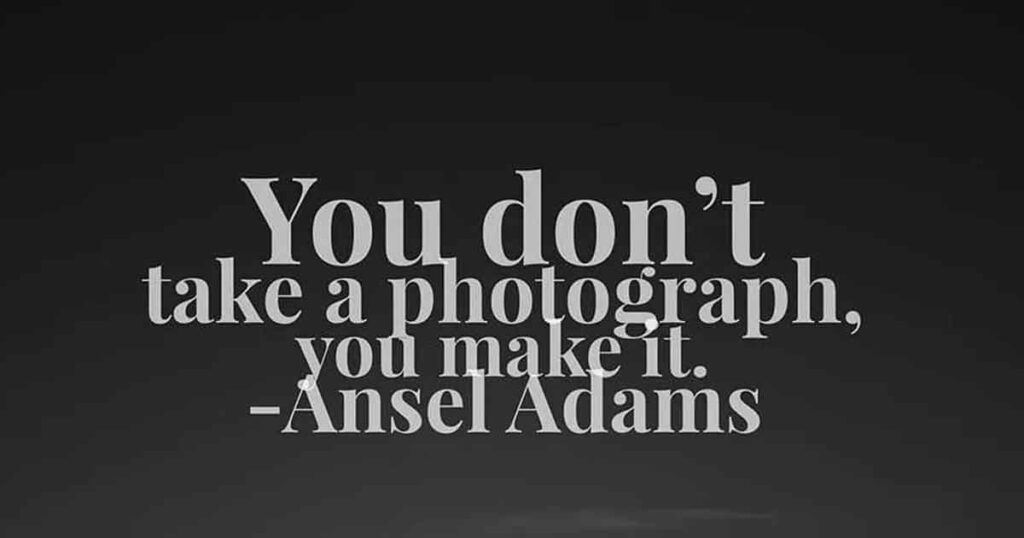
03. Emphasis
The use of emphasis in a shot or painting is to bring dominance and subordination. By taking up more space, being larger in volume, or being darker than the subordinate shapes and colors, major objects or colors can dominate a photograph. It is important to balance the subordinate and dominant elements.
When the artist emphasizes a particular area of a composition, it is said that the artist has created a visual dominant area and commands the viewer’s attention. Contrast is often used to achieve this effect.
04. Hierarchy
Hierarchy, another principle of design, directly refers to the ease with which content can be processed by visitors to a website. This refers to the importance and relationships between elements in a design. It should be obvious that the most important elements or content are the most important.
The use of headings and titles in a design is a great way to illustrate hierarchy. The page title should be the most important. It should also be easily recognizable as the page’s most important element. It is important to format subheadings and headings in a way that demonstrates their importance relative to each other and with respect to the title and body text.
05. Movement
Movement is the use of lines, colors, and textures to guide or carry the eye from one area of a design or shot to another is movement. The artist’s use of the elements of design creates movement in art. Movement is usually generated by utilizing different shapes.
The use of elements in the art to move the eye around the image and within it creates movement. You can create a sense of movement by using diagonal lines or curvy lines (either real or implied), edges, repetitions, energetic mark-making, and illusions of space.
06. Proportion
One of the easiest design principles to grasp is proportion. It’s simply the ratio of the size of elements to each other. The proportions indicate what’s important and what’s not in a design. The importance of larger elements is greater, while smaller elements are less important.
Proportion refers to the ratio of the size of one piece of artwork to its counterparts. Artists use proportion to emphasize emphasis, distance, use of space, balance, and other important aspects.
07. Pattern
A pattern is a uniform repetition of an element of art, or any combination thereof. Anything can be made into a pattern by repetition. Spirals, grids, and weaves are some of the most well-known patterns. Artlandia’s Glossary of Pattern Design provides examples of various patterns and types. Zentangles are a popular drawing technique that divides an abstract or representational outline into multiple areas. Each area contains a unique pattern.
08. Rhythm
The repetition of elements in art in an organized, but non-uniform way creates rhythm. It is closely related to music rhythm. It is not like a pattern that requires consistency. Rhythm relies on variety.
09. Varieties and contrast
Artists use elements of art to create variety and distinctions in shots. The image can be made interesting by using different colors, textures, or patterns. To add contrast, highlight certain colors at the corners and edges of the shot.
To create visual interest, variety in images is important. A shot that lacks variety can quickly become boring, which can lead to a loss of interest. You can create variety through color, typography, and images. But, it is not a good idea to have too much variety. To make a user’s experience better, variety should be used in conjunction with the other elements of the design.
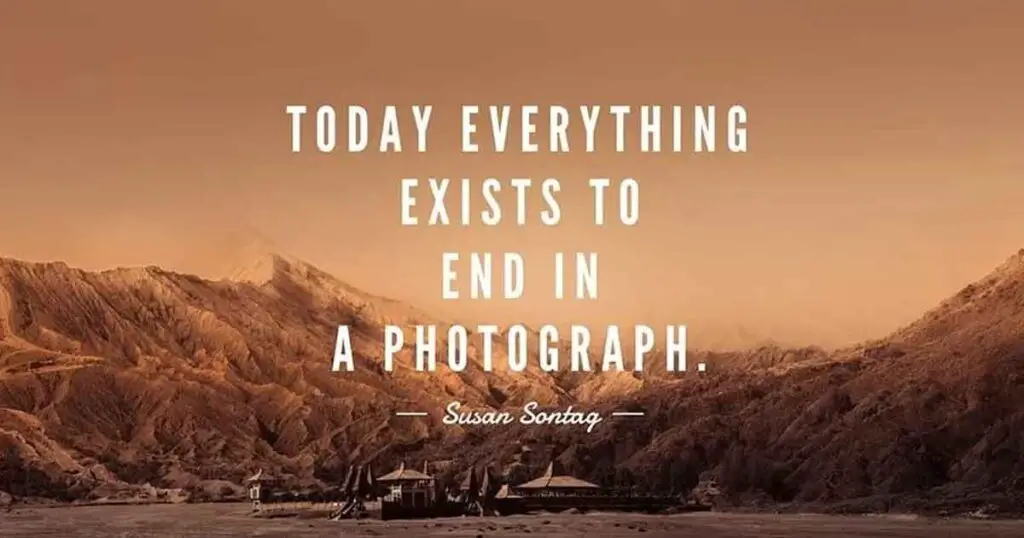
10. Unity
Unity is the outcome of all elements and principles working together. Each part must have a relationship with the other. All parts must be connected to create the overall message or effect.
Unity/Variety Your painting should feel cohesive so that all elements can fit together. Too much unity can lead to monotony, too little variety can create chaos. Both are necessary. You want to have both areas of interest and places where your eye can rest.
Everybody has seen websites or other designs that just slapped elements onto a page without any regard for how they fit together. Newspaper ads using ten different fonts are a common sight.
Unity is the ability to connect elements in a design. In order to be cohesive, visual elements must have clear relationships. Unity is also important to ensure that concepts are communicated clearly and in a cohesive manner. Design with unity is more effective and has a higher level of authority and quality than designs that lack it.
11. Space
Rule for space
The visual composition is all about what you leave out. The Rule of Space dictates that in order to have an aesthetically-pleasing design, the design requires to have a fair share of clutter-free negative space, it is also known as “white space”, background color of the design does not matter in this scenario.
Designers can arrange the elements of a composition using the space around them to draw attention to specific elements.
White Space
White space, also known as “negative space”, is an area of a design without any design elements. Space is effectively empty.
Many designers begin to feel the need for “design” in every pixel and neglect the importance of white space. White space is important for many reasons. It allows elements to breathe and gives them room to grow. A design’s specific content or parts can be highlighted by negative space.
It can make design elements easier to see. Because negative space around lowercase letters is more diverse than uppercase letters, typography is easier to read.
Page-scanning Patterns
The reading habits of readers are influenced by certain patterns. This is observable through their eye movements. Designers often use the most popular patterns to get their audience to notice certain elements in a specific order.
For example, native English speakers read from left to right. When faced with text pages, native English speakers will often use a similar scanning pattern. Arabic is written from left to right. People who are used to reading this language are more inclined to scan pages in the opposite direction. These differences should be considered when designing content for global audiences.
F-Patterns
English readers use the F pattern for their most frequent eye movement pattern. Why? This is how we read a book or letter. From the top to the bottom, we scan the page from left to right until we reach the end.
This natural tendency is why designers use the F pattern most often when creating websites or other illustrations that heavily rely on text. Reading in a different direction can be uncomfortable if it isn’t what we are used to.
Z-Patterns
Images-intensive designs are more likely to be composed in a Z pattern. The brain processes images more quickly than text so readers can scan the page by looking from the top to the bottom, then moving down the page diagonally, before finishing the scan by crossing left to the right (or right to the left, if the audience reads in this direction).
Designers can highlight certain elements in a composition by using the common “Z” eye movement pattern. Consider a heading, an illustration, and a subheading.
12. Repetition
It is a great way of strengthening an idea. Repetition is also a great way of unifying a design that combines many elements. You can use repetition in many ways. For example, you could repeat the same colors, fonts, shapes, or other elements of a design.
And this concludes the list of 12 principles of photography. It is advised to use these principles as a guideline rather than a rule of thumb. They are there to help you along and get better at your craft. And the artist’s intuition is a very thing that helps an artist to capture images that defies these principles in one way or another. So, just keep on practising to hone your skills
